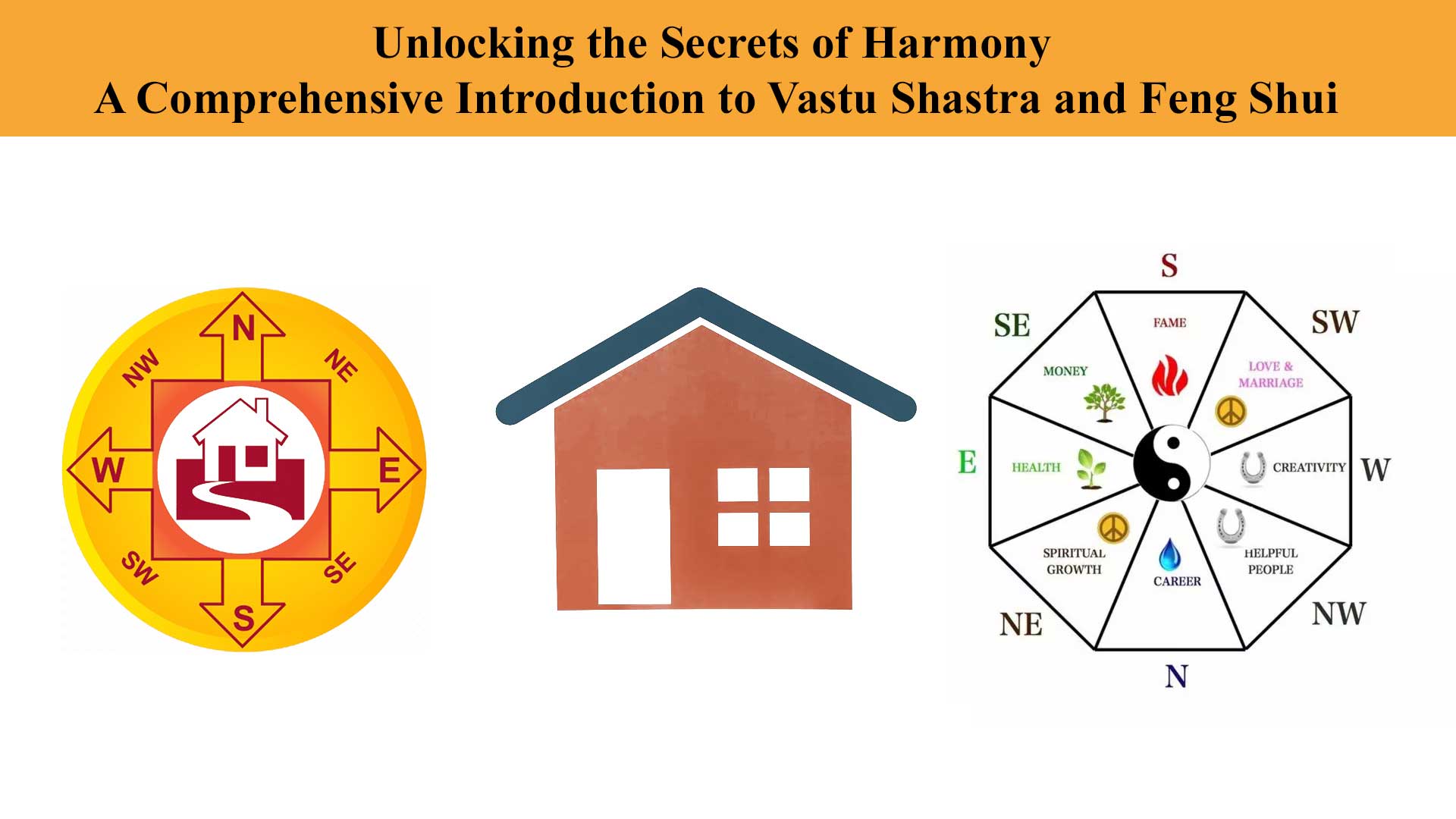
Unlocking the Secrets of Harmony: A Comprehensive Introduction to Vastu Shastra and Feng Shui
In the quest for a balanced and harmonious living space, ancient practices like Vastu Shastra and Feng Shui have emerged as guiding principles. These age-old traditions, originating from India and China, respectively, offer profound insights into the relationship between our homes and the energy that surrounds them. In this article, we'll delve into the basic principles of Vastu and Feng Shui and explore how these ancient arts contribute to the creation of a harmonious and balanced living environment.
Understanding Vastu: The Science of Architecture
What is Vastu? Vastu Shastra, often simply referred to as Vastu, is an ancient Indian architectural science that dates back thousands of years. The word "Vastu" itself means dwelling or habitat, and Vastu Shastra aims to create a harmonious living space by aligning it with the natural forces.
Basic Principles of Vastu: Vastu is based on the concept of balancing the five elements – Earth, Water, Fire, Air, and Space. The principles emphasize the proper orientation and placement of various elements within a structure to enhance positive energy flow. For instance, the entrance of a home should ideally face a particular direction, and specific rooms should be located in designated areas to optimize the flow of cosmic energy.
The Art of Feng Shui: Harmonizing Energy Flow
What is Feng Shui? Feng Shui, originating from ancient China, is the art of arranging one's environment to achieve a harmonious flow of energy, known as "Qi" or "Chi." The term Feng Shui translates to "wind-water" in English, symbolizing the dynamic interplay between the elements.
Basic Principles of Feng Shui: Feng Shui is centered around the balance of Yin and Yang energies and the arrangement of the Bagua, an octagonal map that divides a space into eight areas, each associated with a different aspect of life. By strategically placing objects and adjusting the layout, Feng Shui seeks to optimize the flow of positive energy and promote well-being.
Contributions to a Harmonious Living Space
Alignment with Nature: Both Vastu and Feng Shui stress the importance of aligning living spaces with the natural world. By doing so, one can tap into the positive energies present in the environment, fostering a sense of balance and tranquility.
Energy Flow and Well-Being: The fundamental idea behind these practices is to facilitate the smooth flow of energy throughout the home. When energy flows freely, it is believed to positively influence the mental, physical, and emotional well-being of the occupants.
Balancing the Elements: Vastu and Feng Shui emphasize the balance of the five elements. Each element corresponds to different aspects of life, and a harmonious balance is thought to bring prosperity, happiness, and overall positive vibes.
In Conclusion: Bringing Ancient Wisdom into Modern Living
In the hustle and bustle of modern life, the principles of Vastu and Feng Shui offer a timeless guide to creating a sanctuary of balance and positive energy. Whether you're arranging furniture, choosing colors, or designing the layout of your home, incorporating these ancient practices can contribute to a more harmonious living space.
As we embark on a journey to create homes that resonate with positive vibrations, let us draw inspiration from the profound wisdom of Vastu and Feng Shui. By aligning our living spaces with these age-old principles, we open the door to a world where balance, harmony, and well-being become an integral part of our daily lives.

Comments : (0)